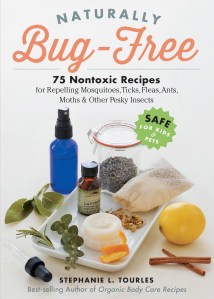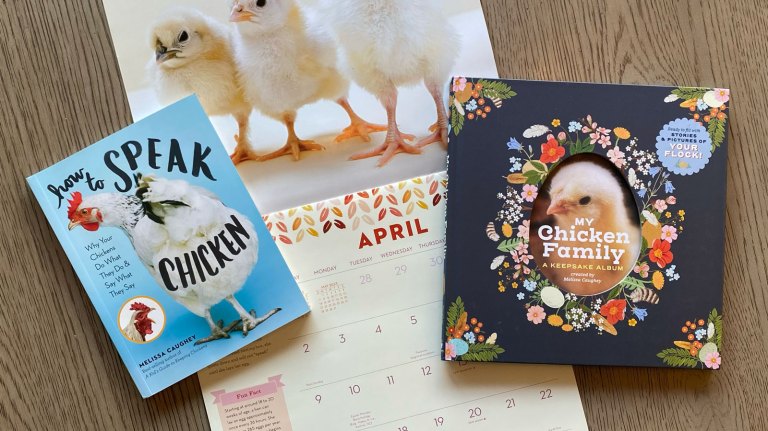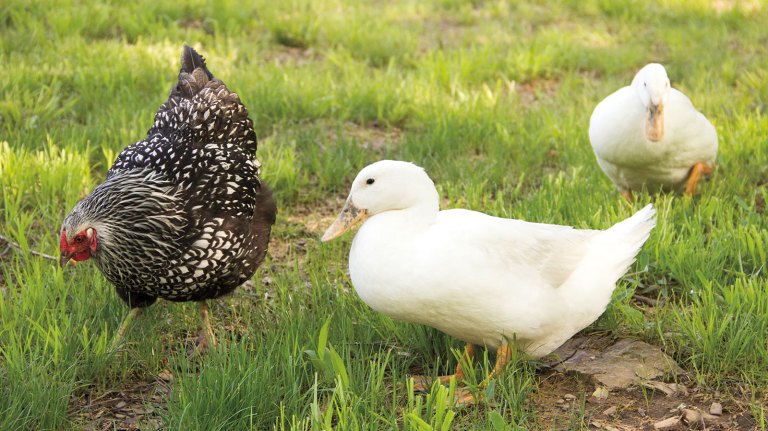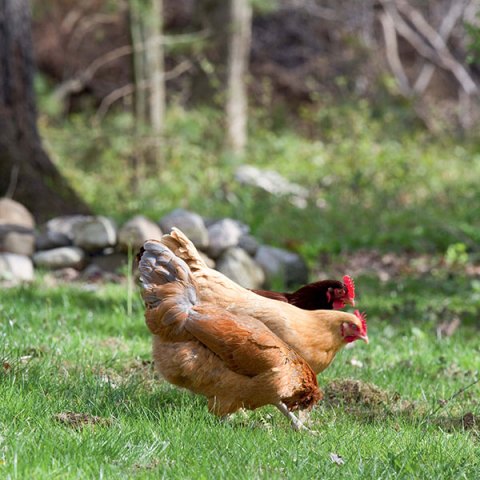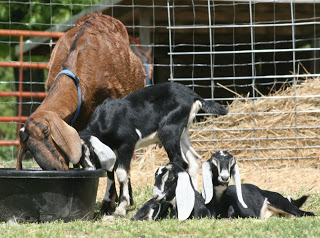Make Your Own Natural Flea- & Tick-Control Powders for Dogs and Cats
Keep four-legged members of your family pest-free, comfortable, happy, and, smelling fresh and clean.

I hear all the time from people looking for alternatives to the standard chemical arsenal that is available to repel or control insects pests, including those that pounce on our pets. Synthetic insecticides don’t belong on the four-legged members of your family any more than they belong on your own skin. I’ve perfected herbal formulations so that dogs and cats no longer need to suffer skin and respiratory irritation from flea-and-tick powders and those liquid spot-on products.
The mildly aromatic recipes I’m sharing here combine insecticidal herbs and essential oils with food-grade diatomaceous earth (DE) and bentonite clay (BC), two mineral-rich substances that deliver a double-pronged deathblow to fleas and unattached ticks. They are powerful desiccants, due to the abrasive action of the silica on the parasite’s exoskeleton, and they also clog the insect’s breathing channels, leading to death within 24 to 72 hours.
These powders work remarkably well when applied regularly, once or twice per week, especially during the warmer months. No worries about your pets licking themselves, either — ingesting DE and BC will even add valuable minerals to their dietary intake, and the high silica content assists as a natural dewormer. Additionally, the powder acts as a deodorizer and dry shampoo, leaving your pet’s coat smelling fresh and clean.
The only equipment required is a bowl and whisk, and plastic, cardboard, metal, or glass application and storage containers. A good application container is a recycled herb or spice jar with a perforated lid.
A Couple Notes of Caution: Cats are particularly sensitive to essential oils, and care must be taken to avoid any risk of toxicity. Their acute sense of smell heightens their distaste for strong odors; their thin skin allows for rapid absorption of substances into the bloodstream; and most importantly, they lack the enzyme glucuronyl transferase, which aids in the metabolism of chemical constituents. When mixing these formulas for cats or for dogs under one year old, skip the essential oils altogether.
Also note that these recipes were developed for dogs and cats. For use on animals other than dogs or cats, please seek the advice of an herbalist and/or aromatherapist with expertise in this area, or seek out a holistic veterinarian.
Natural Flea– and Tick–Control Powders for Dogs and Cats
Each of the recipes yields 2 cups of powder.
Important Note: Omit essential oils in powders made for cats and for dogs under one year old.
Ingredients
“Shoo, Flea, Don’t Bother Me” Powder
- 1 cup food-grade diatomaceous earth
- ½ cup bentonite clay powder
- ¼ cup rosemary leaf powder
- ¼ cup black walnut hull powder (Be aware that the black walnut hull powder can temporarily darken blond or white fur.)
- 5 drops cedarwood essential oil (see note above)
- 5 drops rosemary essential oil (see note above)
Bite Ban Flea & Tick Powder
- 1½ cups food-grade diatomaceous earth
- ¼ cup lemongrass powder
- ¼ cup neem leaf powder
- 10 drops lemongrass essential oil (see note above)
Bugs-Be-Gone Powder
- 1 cup food-grade diatomaceous earth
- ½ cup neem leaf powder
- ½ cup lavender flower powder
- 10 drops geranium essential oil (see note above)
Directions
Combine the DE and/or BC with other dry ingredients specified in a medium bowl and gently whisk to blend.
Add the essential oils (omit essential oils, if making powder for cats or for dogs under one year old), scattering the drops around the powder, and whisk again to combine.
Loosely spoon the mixture into the container(s), then shake vigorously for about 30 seconds.
Label and date the powder. Allow the powder to synergize for 24 hours prior to use.
Store at room temperature, away from heat and light; use within 1 year.
Application: To prevent making a dust cloud in your home, I suggest powdering both your indoor and outdoor pets outside, keeping them controlled with a comfortable harness and leash (this includes cats). Most pets will shake off much of the powder immediately after being treated, but if you’ve massaged it close to the skin, a sufficient amount should remain to do the job.
To ensure maximum effectiveness, sprinkle the powder evenly and uniformly from nose to tail, and as close to the skin as possible, massaging it in really well. Fleas and ticks will rush to any part of your pet that is dust-free, so address the entire face, ears, genitals, anus, and between the toes. When applying to the face, be extra careful not to get powder in the eyes, nose, or mouth, as it is irritating to mucous membranes. Repeat once or twice per week, as needed, to control fleas and ticks.
When treating mature pets under 5 pounds or young kittens and puppies, carefully apply very small amounts of powder to one section of the body at a time, massaging it into the skin very gently to minimize dust.
TEXT AND RECIPES EXCERPTED FROM NATURALLY BUG-FREE © 2016 BY STEPHANIE L. TOURLES. ALL RIGHTS RESERVED.
